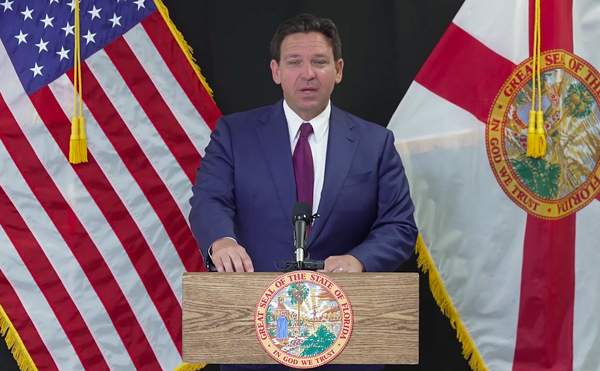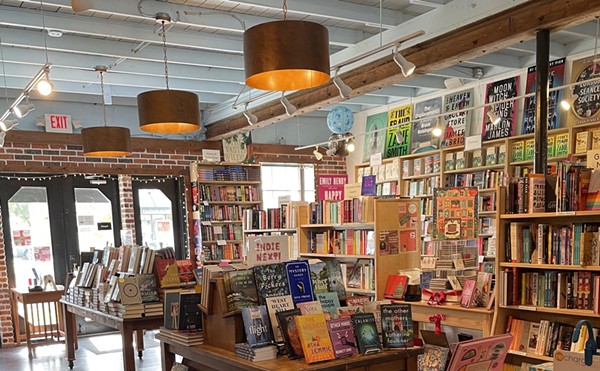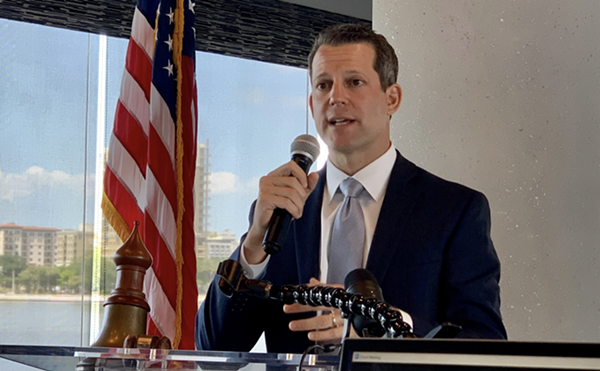"How ya gonna keep 'em down on the farm after they've seen Paree? How ya gonna keep 'em away from Broadway, jazzin' around and paintin' the town?"
That post-WWI lyric was a cultural cautionary tale, warning that when the country boy returned from the war, farm life just warn't gonna hold a candle to the wine, women and song of Paris and NYC.
Lately that lyric has lodged itself in my brain, but not because I've been feeling nostalgic for old pop tunes. The words popped into my head because they seemed an apt subtitle for a discussion the Planet is hosting on Monday night at the Tampa Bay Performing Arts Center entitled "Baby Please Don't Go: Helping Young Artists Stay in Tampa Bay."
Our arts preview issue in August got us wondering: Why did the future plans of many of the young artists we interviewed not include Tampa Bay? Simultaneously, we'd been asking ourselves the question of what the Planet and its parent company, Creative Loafing, could do to make Tampa Bay a better place to live. The answer to the second question, we decided, was inextricably tied to the first. If one measure of a vibrant urban landscape is the quality and quantity of its artistic activity, particularly of the homegrown variety — those artists just beginning to make their mark — then we have to figure out why Tampa Bay is a place such talented people want to escape.
Not just to NYC and Paree, but to Chicago, Miami, even Baltimore — all named by our interviewees as places they'd rather be.
The urgency of attracting young residents has been noted before, most vividly in last year's Creative Tampa Bay study, "The Young and the Restless."
But what we want to address on Monday night are the specific needs of artists. There's the artist-as-harbinger reason, of course: the almost-always-truism that where artists settle, big-money real estate will follow (and thereby push the artists out). But more to the point, check out the "Young and Restless" study again. What the much-sought-after 25-to-34-year-old crowd seeks in an urban environment are qualities directly related to what artists and arts organizations can offer: new ideas, openness to newcomers, encouragement of diversity, vibrant gathering places. An environment that's inviting to artists will naturally prove inviting to other young populations, too.
I've seen it happen. In Philadelphia, where I spent many years before moving south, the indigenous arts scene in the late '70s and '80s was moribund. Within the theater community, for instance, the story was all about New York: the one big company in town always hired Big Apple actors, and locally trained performers were almost automatically expected to head north. For small troupes, the prospect of "going Equity" — signing contracts with Actors Equity to hire union members and pay union scale — was viewed as an Everest-like financial challenge.
But now that's all changed. The Theatre Alliance of Greater Philadelphia, a nonprofit which has been instrumental in changing the climate, can now point to a regional theater scene comprised of more than 100 active companies of all sizes, many with the wherewithal to handle Equity contracts. New theater buildings have gone up and existing facilities have been improved. Young theater artists from other parts of the country are moving to Philly.
What happened? Mentorships: One established company shared performance and rehearsal space with a fledgling troupe that later became so successful that it helped other newcomers get a foothold. Generosity: Property owners in an old warehouse neighborhood allowed a performing arts festival to use unoccupied buildings for nominal rent; that festival proved to be the incubator for a generation of new arts groups, increasing the neighborhood's attractiveness to galleries and condo developers. Cooperation: An annual theater awards program was established, complete with a big Tony-esque bash.
Mentorship, generosity, cooperation — can they happen here? To some extent, they already have. The Tampa Bay Performing Arts Center provides a home to both Jobsite Theater and to the student artists at the Patel Conservatory. A new home for Stageworks is being worked into one developer's condo plans in the Channel District. The upcoming Chihuly museum in St. Petersburg owes its existence to a public/private partnership.
But we're a long way from reaching critical mass — that coalescence of energy, optimism, talent and money that says Tampa Bay is a place where one can make a life making art. What do we still need to do? What can government do to help? What's going on already that not enough people — artists and otherwise — know about?
We'll be addressing these questions and more at 7:30 p.m. on Mon., Oct. 17 at TBPAC's Shimberg Playhouse. The panelists include Jobsite's David Jenkins; Margaret Murray of St. Petersburg's Arts Center; Jack Holloway, named best actor of 2005 by Planet theater critic Mark Leib; Carrie Mackin of Seminole Heights' Covivant Gallery; and Paul Wilborn, Creative Industries Manager for the City of Tampa.
I hope we'll see you. "Baby Please Don't Go" will be the first edition of "The Political Party," a series of live talk shows we'll be holding on a variety of subjects throughout the year. Please come and talk back — we'll have the microphones ready.
















